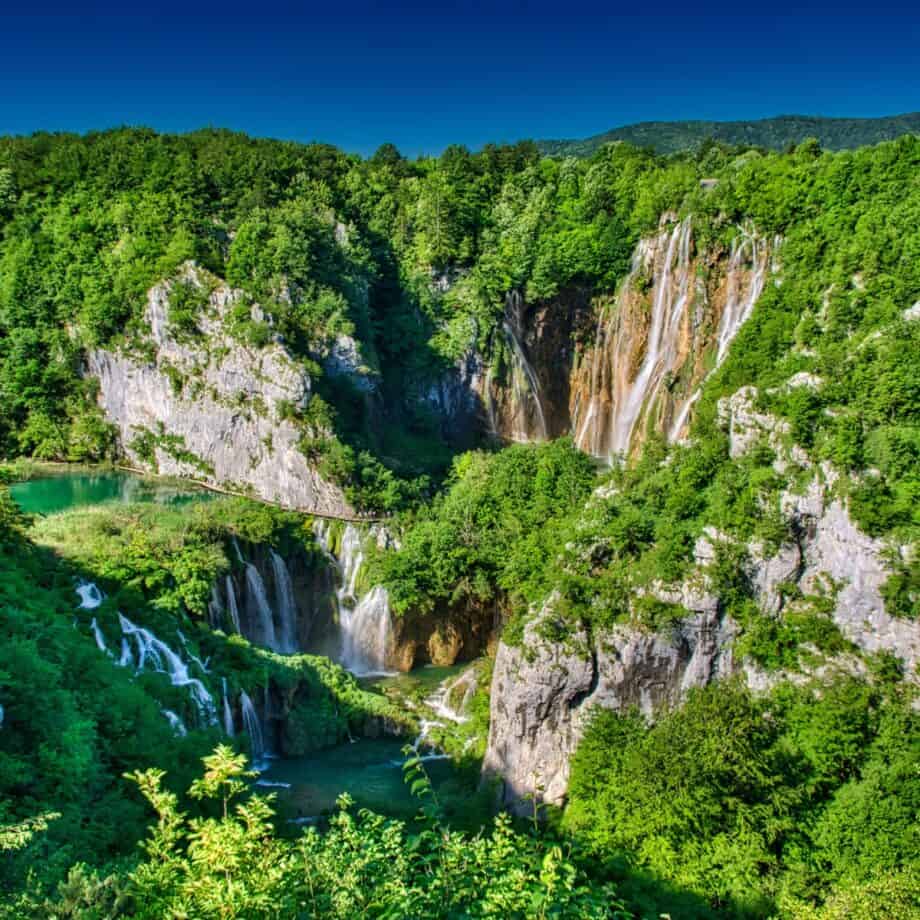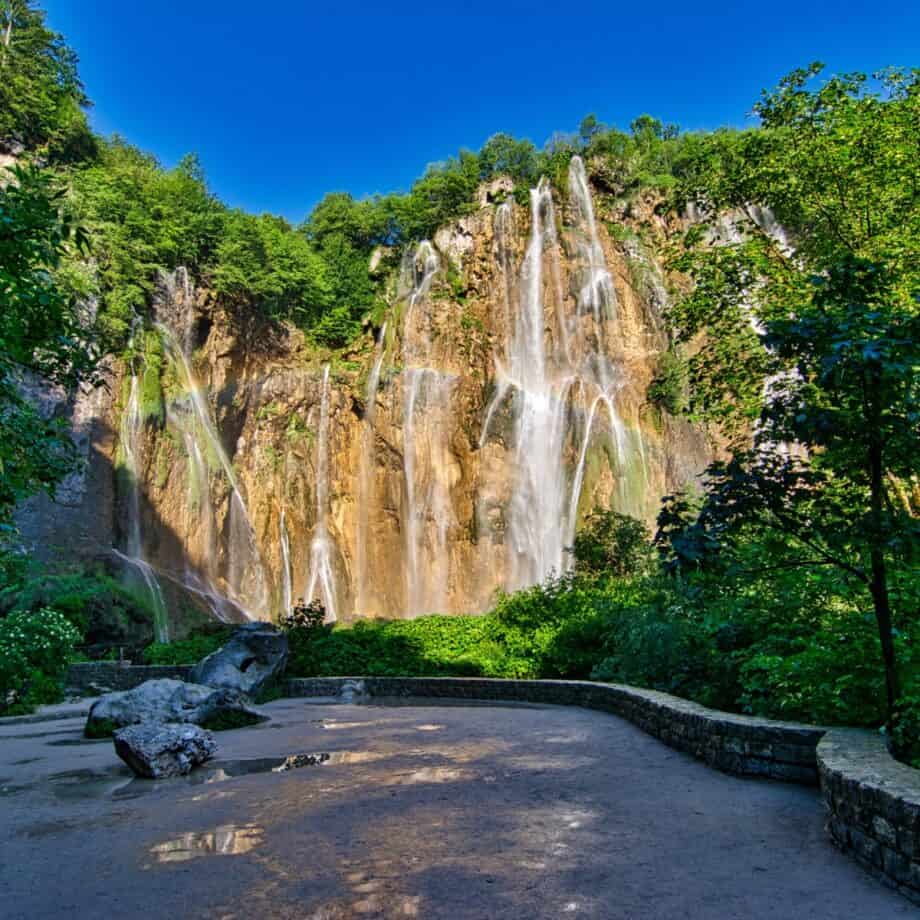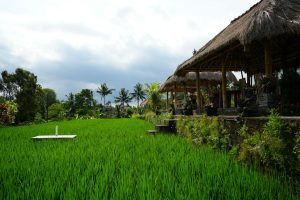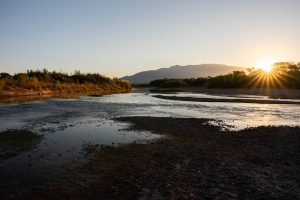
Every year, Plitvice Lakes National Park attracts visitors from all over the world. When Plitvice Lakes are mentioned, the first image associated with them is the Big Waterfall, which is also the first sight that welcomes visitors at Entrance 1, making it an indispensable attraction of the park. Here are some interesting facts about the Big Waterfall.
The Big Waterfall — the highest waterfall at Plitvice Lakes
The Big Waterfall, with its impressive height of 87 meters, is the highest waterfall at Plitvice Lakes National Park and all of Croatia. Located at the end of the Lower Lakes, this magnificent waterfall is the highlight of every visit to the Park. Its size and strength leave anyone who gazes upon it breathless, and the roar of water falling down the rocks creates an incredible soundscape that adds a magical feeling to the whole scene. The Big Waterfall reaches a height of 62 meters up to the first pond and, after flowing across several cascades, the total height reaches 87 meters. Unlike the other waterfalls at the Park that are formed by water overflowing from one lake into another across tufa barriers, the Big Waterfall is formed by the fall of Plitvice Stream, which springs 3 km to the West, at the foot of Mt Preka Kosa. This unique characteristic makes it special in the context of the natural environment of Plitvice Lakes.

Natural beauty and surroundings
The surroundings of the Big Waterfall further contribute to its beauty. The dense vegetation, lush forests and crystal-clear water create an almost fairy-tale atmosphere. During spring and summer, the surrounding flora thrives in its full splendour, and in winter, the waterfall often freezes, creating beautiful ice sculptures that attract photographers and nature lovers.

Ecological significance
The Big Waterfall is not only a tourist attraction but also an important ecological phenomenon. This waterfall, as well as the entire ecosystem of Plitvice Lakes, is home to many endemic species of plants and animals. The preservation of this natural treasure is extremely important, and Plitvice Lakes National Park invests significant efforts in the protection and preservation of this unique ecosystem.

Hydrology and the source of Plitvice Stream
Plitvice Stream, which is 4 km long, springs as a powerful karst spring under the steep rock, near the hamlet of Rodi? Poljana. The source of Plitvice Stream is constant, although the flow of water varies between the dry summer months and rainy periods. Plitvice Stream also receives water from Sartuk Stream, which further increases its yield. This unique hydrographic phenomenon contributes to the spectacular wonder that is the Big Waterfall.

History and geology
The Big Waterfall, as well as the entire complex of Plitvice Lakes, was created by long geological processes. The limestone rocks through which the waters flow create layered tufa barriers that are constantly changing and developing. Tufa, a type of porous stone, is formed by the sedimentation of calcium carbonate from mineral-rich water. This process takes thousands of years, giving the landscape its unique form and structure.

Visiting the Big Waterfall
Access to the Big Waterfall is possible through walking trails that are well marked and adapted for visitors of all ages. The Park offers several routes leading to this impressive waterfall, each offering different perspectives and views of the waterfall and the surrounding natural beauty. The trail that leads to the waterfall passes along Lake Novakovi?a Brod and ends at Sastavci Waterfalls, which are 25 meters high.

The Korana River and its path
The Big Waterfall, together with the water from Sastavci Waterfalls, forms the Korana River. The source of the Korana River is located at the foot of Sastavci Waterfalls, where the waters of Plitvice Stream and the lake system merge. The source is located at an altitude of 475 meters, and the length of the river flow from the source to the point where it joins the Kupa river near Karlovac is 134 km. The Korana river belongs to the Black Sea basin and flows towards the Kupa river, then towards the Sava and Danube rivers and finally into the Black Sea.

Visiting Plitvice Lakes National Park and the Big Waterfall is an unforgettable experience. This breathtaking instance of natural beauty enables visitors not only to feast their eyes but also to gain a deep respect for the natural processes that have shaped our planet. The Big Waterfall, with its magnificent appearance and the roar of water, is a symbol of the strength and beauty of nature that reminds us of the importance of preserving such amazing landscapes for future generations. If you have not yet visited this natural paradise, the Big Waterfall and Plitvice Lakes deserve to be high on your list of places to see.
Did you enjoy this article?
Receive similar content direct to your inbox.
Please enable JavaScript in your browser to submit the form






